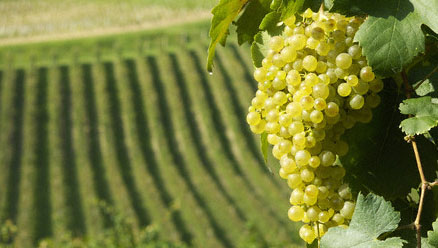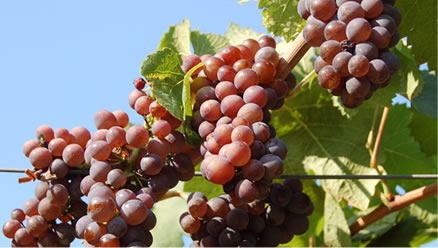Learn About Our Italian Grape Varieties
EXPLORE THE VINEYARDS
 PROSECCO
PROSECCO
The name of Prosecco came from the northeastern Italian village of Prosecco (Trieste), where the grape variety is believed to have originated.
Our Prosecco Brut is made from several local grape varieties, but the most important of these is the rustic and vigorous Glera grape which has large, long, loose bunches of berries of a beautiful golden yellow color. A few other varieties are also used in the blend, including Verdiso for the wine’s acidity and zestiness, Perera for perfumes and aromas, and lastly, Bianchetta, to make the wine more supple in the mouthfeel.
The D.O.C.G. growing area is located not far from Venice, between the small towns of Conegliano and Valdobbiadene in the Veneto region of Northeastern Italy. Its location between the Dolomites and the Adriatic Sea creates an ideal climate for wine grape growing. Because the terrain is so steep, it is difficult to cultivate. But the through much time and effort, they have been successfully planted to not only grow world-class wines, but also to create a unique landscape of breathe taking beauty.
 PINOT GRIGIO
PINOT GRIGIO
Our Pinot Grigio IGT is made from the grape of the same name (also called Pinot Gris), which is believed to be a mutant of the Pinot Noir grape. This grayish-blue colored grape produces the Italian white wine most popular with American wine consumers.
"Pinot" comes from the word meaning "pine cone" in French, because the grapes grow in small pine cone-shaped clusters, and "Grigio" means "grey" in Italian. but the grape can have a brownish pink to black and even white appearance.
Researchers at the University of California, Davis, have discovered that Pinot gris has a remarkably similar DNA profile to Pinot noir and that the colour difference is derived from a genetic mutation that occurred centuries ago. The leaves and the vines of both grapes are so similar that the colouration difference is the only thing that tells them apart. (source: K. MacNeil The Wine Bible)
SUSTAINABLE GROWING PRACTICES
BIVIO ITALIA HELPING TO LEAD THE WAY IN ITALIAN SUSTAINABILITY
- Copper and sulfur are often used in place of herbicides and pesticides greatly reducing chemical treatments. Natural predators are used for pest and rodent management.
- Innovative irrigation systems optimize the use of water resources so water is only used when and where it is needed.
- Cover crops are planted to protect the vineyards from erosion and to create competition with the vines for nutrients and water, producing lower yielding, higher quality clusters.